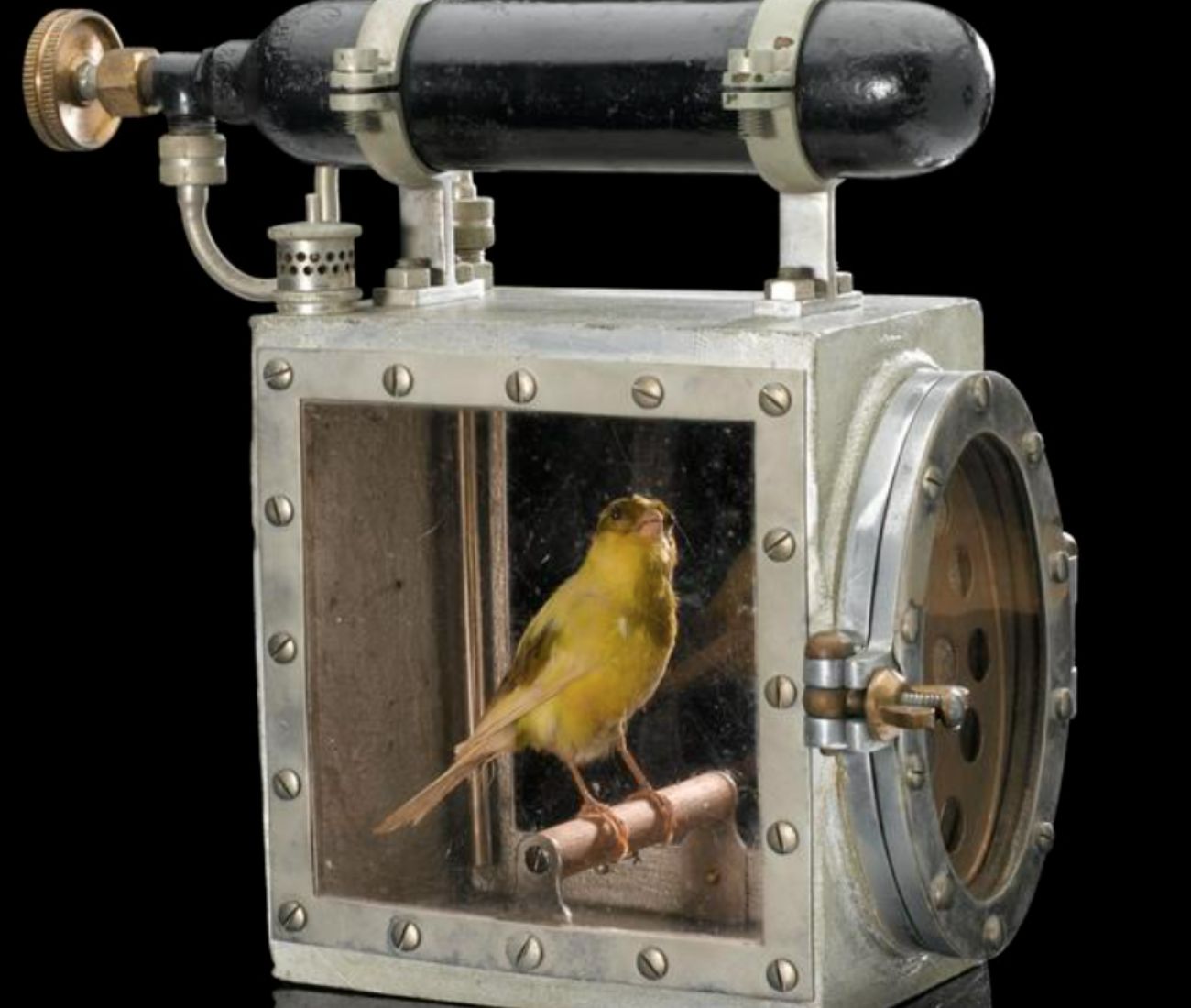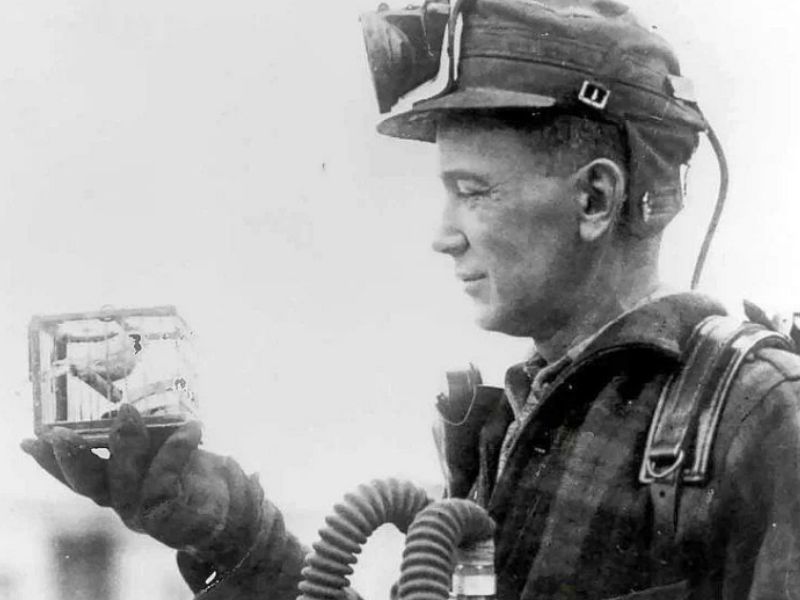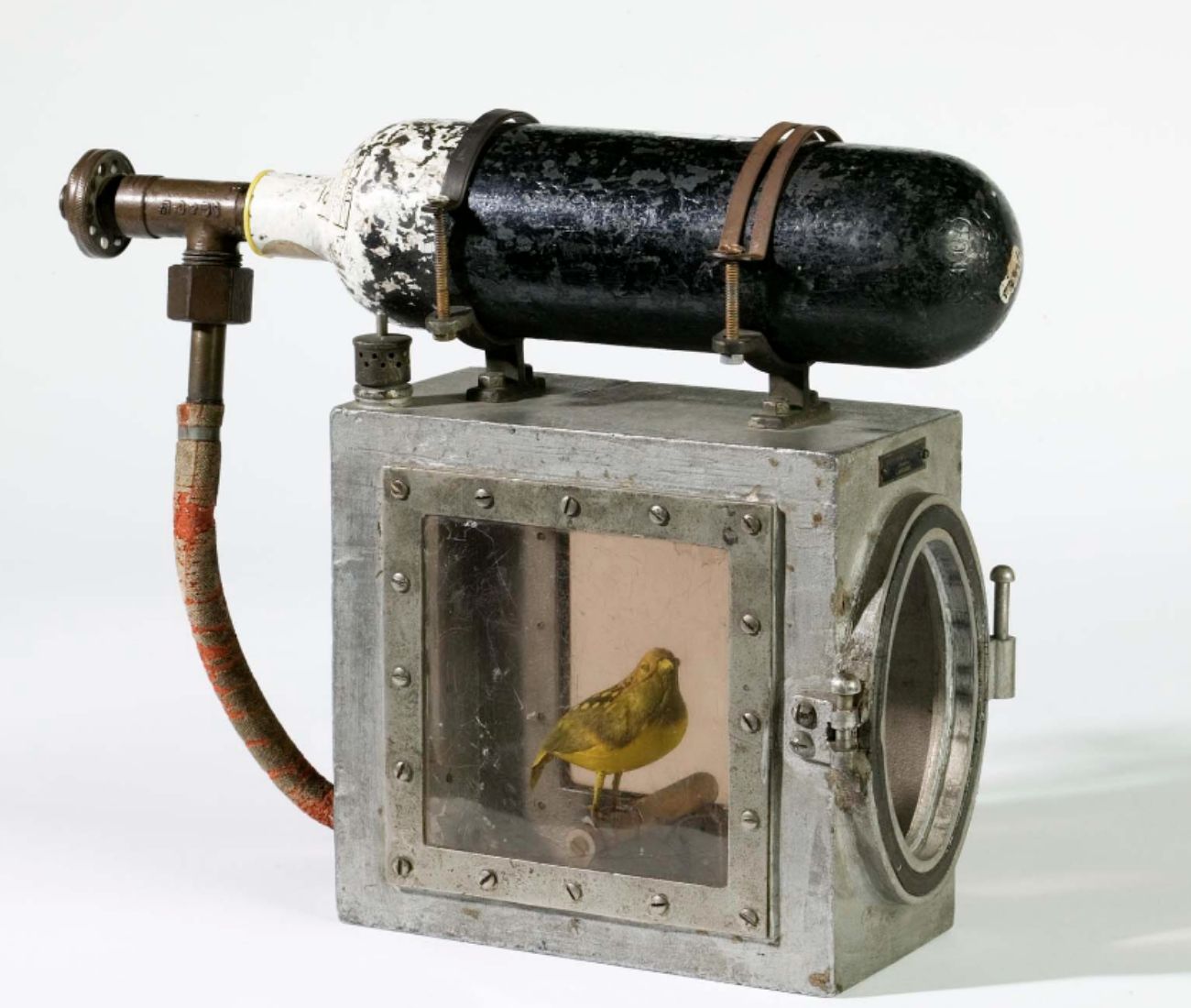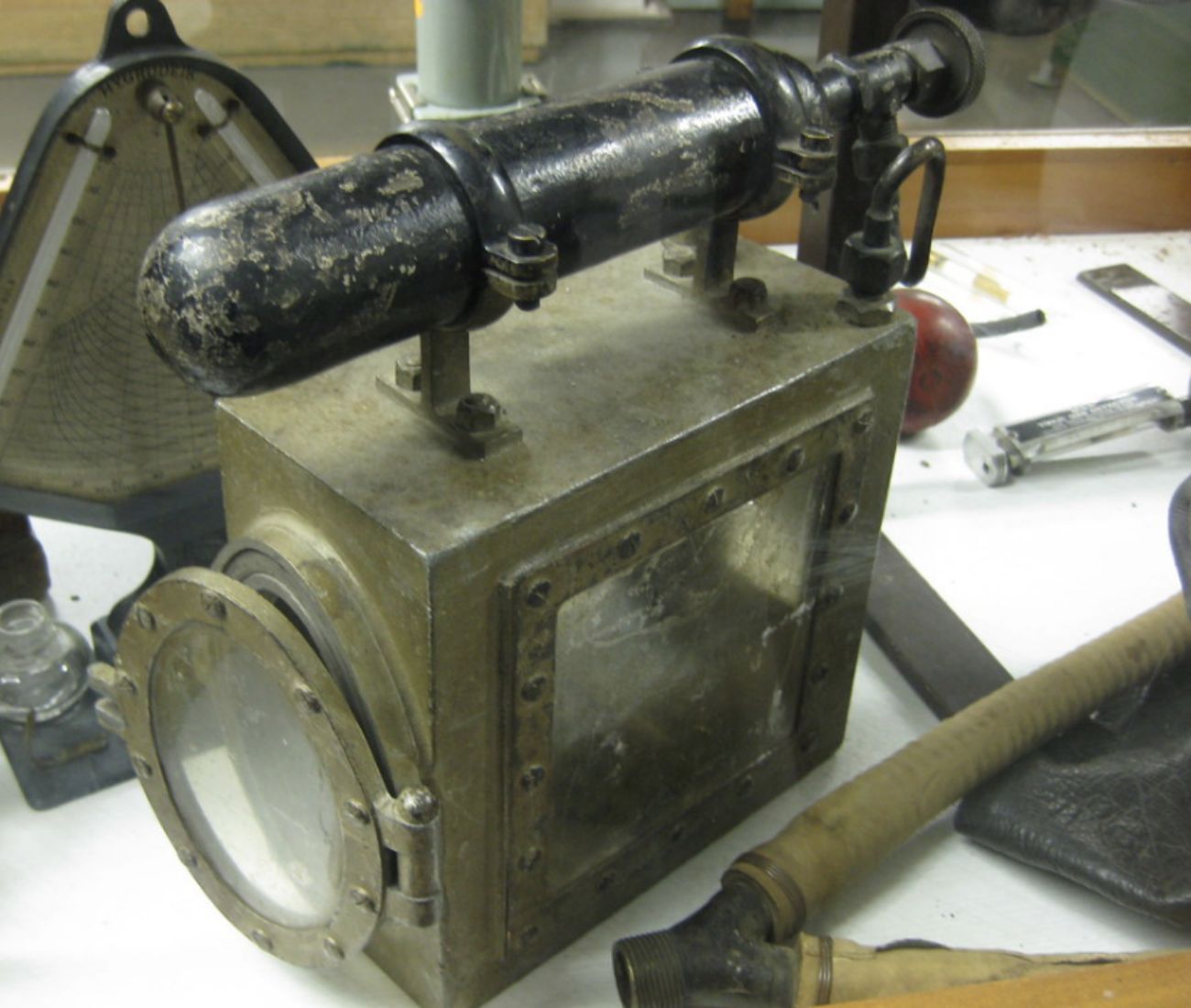There are over 20,000 objects here at the Museum of Science and Industry, and millions more in the Science Museum Group's overall collections.
So, it is challenging to find an outstanding object. Yet, the device used to revive canaries in coal mines speaks uniqueness itself.

The history behind the device invented to resuscitate canaries in coal mines
In the late 1800s, canaries were employed in mines to detect gases like carbon monoxide. While large amounts of this gas are deadly to humans and canaries, the latter is much more sensitive and react quickly to even small amounts.
This discovery was made by John Haldane, who was in charge of investigating an explosion at Tylorstown Colliery in 1896. He determined that carbon monoxide was the cause and embarked on finding a way to detect the odourless gas before it endangered human lives.

The result was the creation of this device, which included a cage for the canary. The cage featured a circular door with a grill to prevent the canary from escaping.
The door would be left open, but when there were the canary’s signs of carbon monoxide poisoning, oxygen would be released from the tank on top; hence it revived the canary. The miners would then evacuate the area of danger.
Although animal testing in hazardous conditions is not encouraged, people appreciate that Haldane considered the well-being of the canaries and aimed to minimize harm to them.
The canaries in coal mines were previously believed o sacrifice their lives to warn humans. Thus, discovering this object was a tremendous relief, although subsequent research revealed less considerate cages.
Many miners genuinely cared for their canary companions. Meanwhile, the introduction of electronic sensors in the mid-1980s did not gain real popularity because it indicated the loss of this companionship.
Why is the device special?
One of the reasons this object holds a special place is that it bears the marks of use. It is scuffed and shows clear signs of wear. This may seem odd, but in museums, people often appreciate objects that have endured some wear and tear.
They provide more context and offer insights into how the object was utilized. Used examples allow for more profound research and understanding compared to pristine ones.

For instance, the image above depicts another canary cage at our sister site, the Science Museum. It appears pristine, and the canary looks incredibly lifelike.
However, in museums, people value objects that can tell stories. Some prefer working with items that appear to have experienced action.
History shows through raw beauty, not a polished one
The museum aims to portray the history of scientific innovation and industrialization, and we often showcase that history is not always pristine. People possess dirty objects, damage, or represent challenging topics.
If they were to erase the dirt or conceal the blemishes, the histories we present would lose their authenticity. Therefore, the object is a worn and damaged box, once used to confine a canary and indicate dangerous conditions.

It may not be visually appealing, and it is unfortunate for the animal, but it represents an innovation in mining practices and our understanding of gases and avian physiology.
It enables us to narrate fascinating histories and serves as a compelling example of how scientific knowledge leads to changes in industrial practices—a significant theme of our museum.






